Sometimes, old is better than new. In my opinion, that is the case when it comes to irons–no Black and Decker or Rowenta can compare to my fabulous, absolutely-cannot-sew-without General Mills/Betty Crocker/Tru Heat beauty.
In 1946, these were made by General Mills, promoted by Betty Crocker and named Tru Heat. But why does this iron out perform all the others?
- Temperature–Hot enough to press heavy linen flat and flawlessly, it could probably melt the bumper on a Ford truck. New irons never reach the temperature of my Tru Heat.
- Shape–The football shape allows you to iron forward or backward. This is not a feature that I would have ever sought or thought useful. But once I began using the “football iron” I found myself ironing all directions, very efficiently.
- Sole–I have no idea what magic was employed to create this sole to which starch almost refuses to stick. On average, I go through a can of Niagra Original spray starch a week. Starch sticks only if the iron is not yet hot enough. I clean the surface once every 8-12 months.
- Weight–At 3 1/2 lbs. the weight does the pressing. It is not necessary to “press,” only to glide slowly. By today’s standards, 3 1/2 lbs. positively corpulent. But compared to Tru Heat’s precursor, the flat iron, this weight must have seemed airy.
- Surface–The sole surface has no holes. Unlike steam irons, there is no place for starch to “hole up” and, at some inopportune later time, cause a stain on your most important project in the most conspicuous place.
So where did I get my 1946 iron? I paid $ .50 for it at our church bazaar almost 20 years ago. The lady in charge of pricing voiced her opinion that no one wanted an iron without steam and we would be lucky to move it for 50 cents. I like old things and thought it was unique, so I plunked two quarters on the table and carried it home. It came complete with its original box (long since discarded) and a booklet entitled IRONING the Betty Crocker way. It includes tips such as these:
Out of curiosity, I fired it up and pulled out a freshly laundered, spray starched damask napkin. It was love at first press. That same iron, purchased in 1990, has worked long hours for 21 years now and still works perfectly, still looks like new.
When we bought our cabin in North Carolina, I wanted to keep one there so I wouldn’t have to shuttle my home iron back and forth. I was able to buy Tru Heat #2 on eBay for about $12—a whole lot more than my church bazaar purchase but still reasonably price. Of course, before bidding I required assurance from the seller that it was in good working condition. Many sellers will not even plug the iron in, thinking its only value is its age and uniqueness, of interest only to collectors.
By then, I was on a roll. I lined up three backups on the shelf. If they last half as long as my first and current iron, I’m probably good for the duration of my pressing days.
I always take my iron when I teach so that I can press my samples before class. Several students have seen the iron, asked about it and gone on to get their own Tru Heat from eBay, others from their mothers’ closets. Wow. I may have started a fad!!!! But this run on Tru Heats has not diminished the supply. They are always available on eBay, priced anywhere from $5 to $90.
It is important to have a good surface for the hot iron when it is not in your hand. The little ridges on each side are meant to suspend it above the fabric surface of an ironing board. But mine is heavily padded and springs up against the iron edge, more than once causing a dangerous burned hole.
Now, I rest a long edge of the iron on a narrow cutting board which sits at the end of the ironing board. Before I found this my husband gave me a piece of lumber.
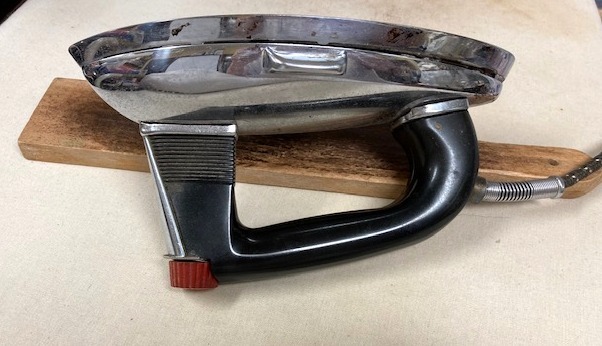
The steam attachment discussed below, came with an “iron stand” that would work as well. I hadn’t noticed it at the bottom of a box it was pulled out for the photo.
Sometimes New is Better than Old
Of course, the Tru Heat does not produce steam, a capability I view as a handicap for my style of ironing. I prefer spritzing with water and using a press cloth. But after World War II, women wanted steam feature and technology began the development process with this iron.
She looks happy, but I found it to be very cumbersome. Just for fun, I tried this out. My oh my!
The iron sole slips into this plate like a foot sliding into a slipper. The tank is filled with 1 1/2 cups of water. Add that to the weight of the attachment itself and this piggy back set up is about to exceed the legal poundage limit on the ironing board!
What a dinosaur! But what an innovative first step toward the modern steam iron.
Do you have any old sewing related tools that you prefer over new? I’d love to hear about them.

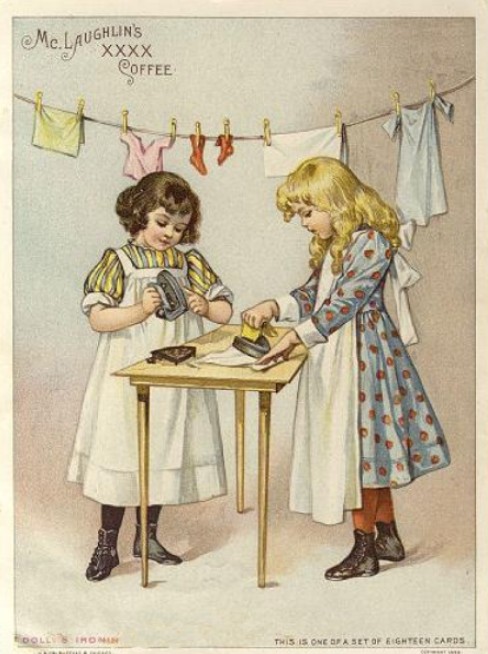
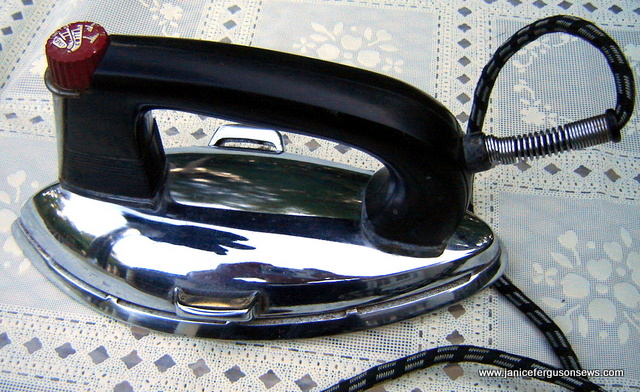
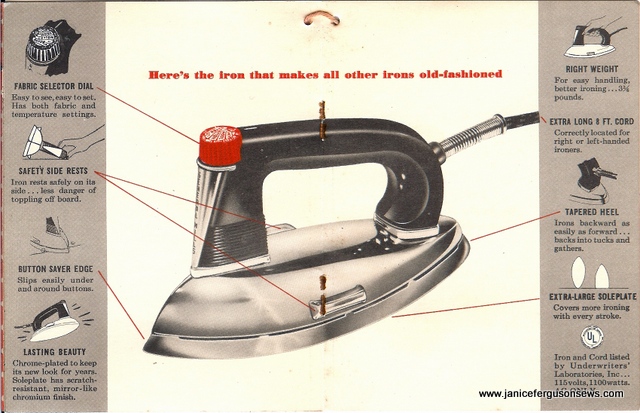
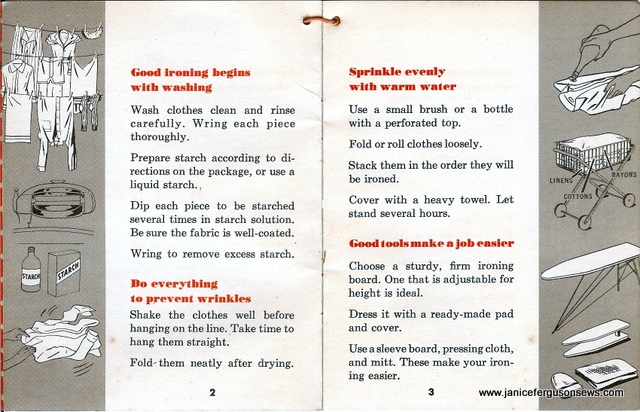
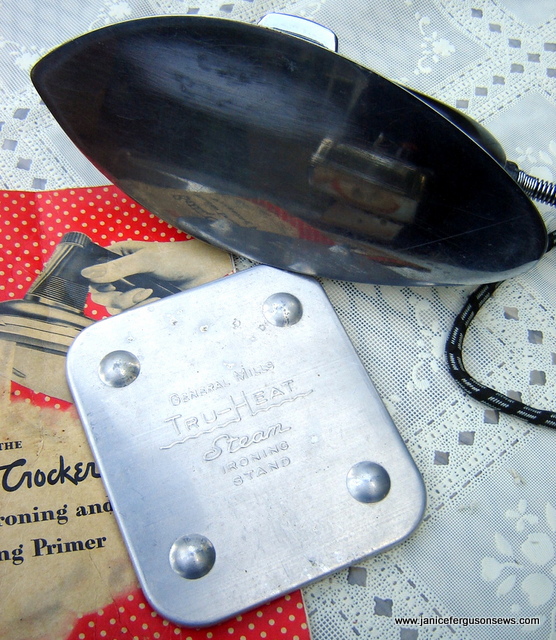
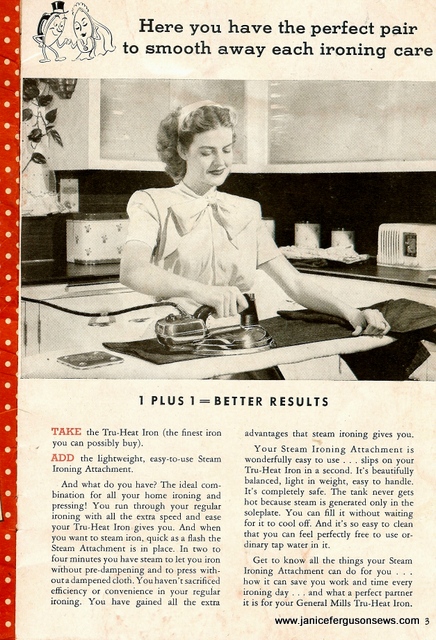
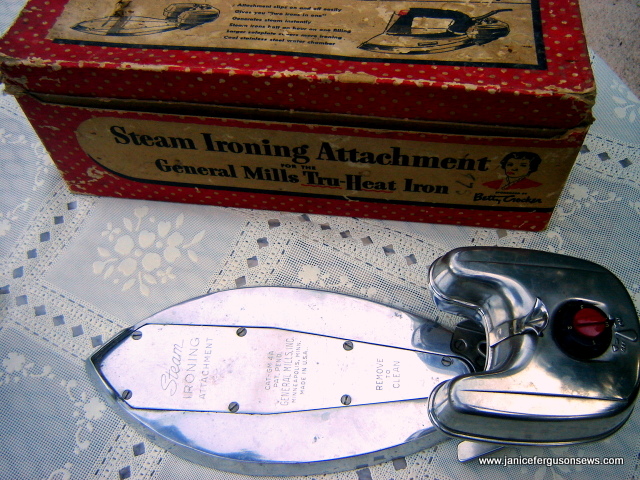
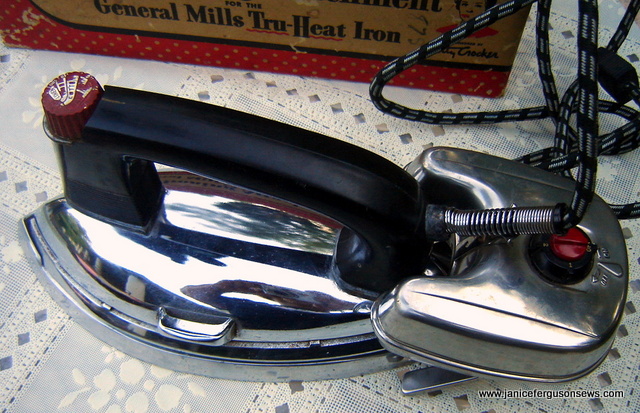

Pingback: "The end of a perfect day of ironing".....